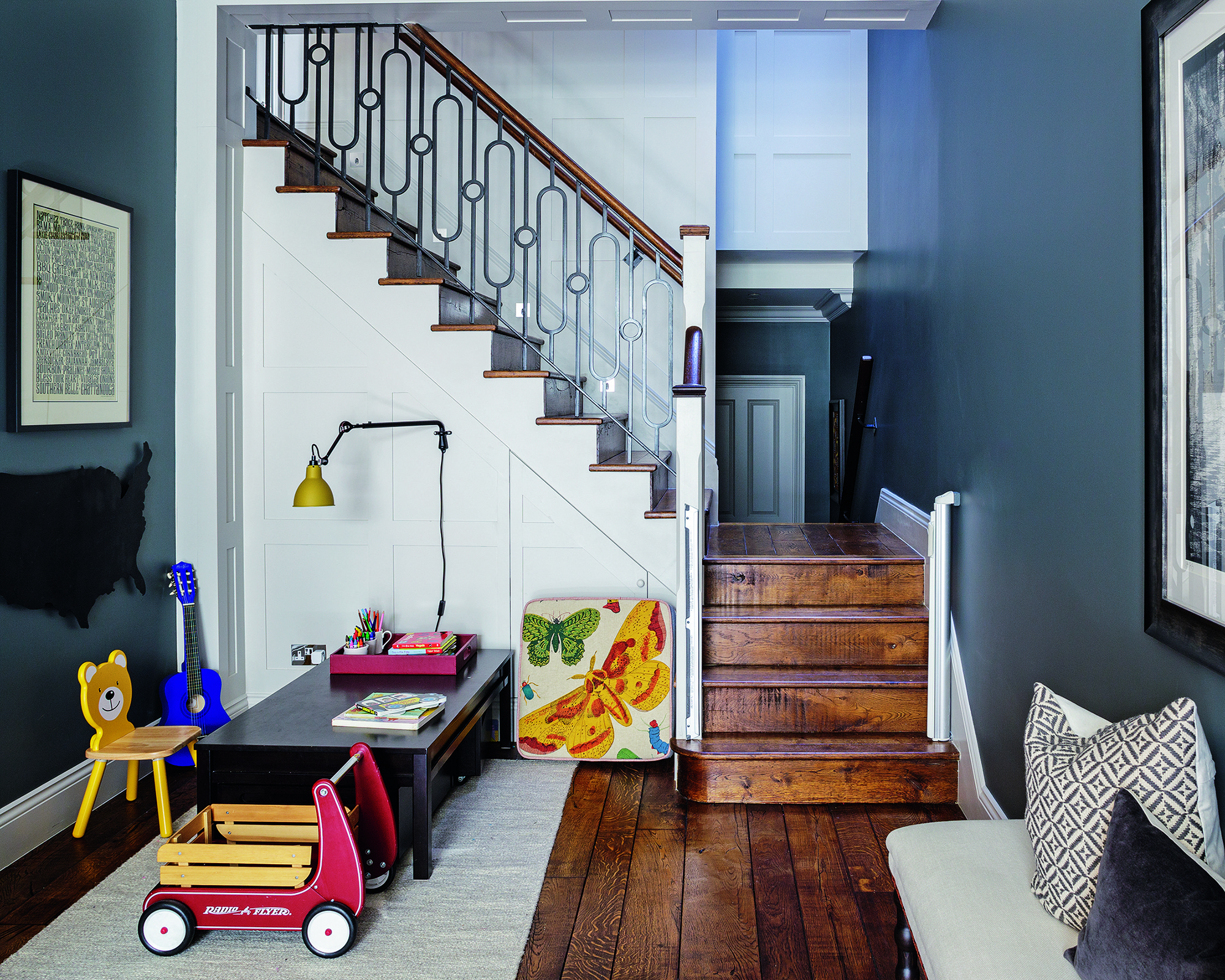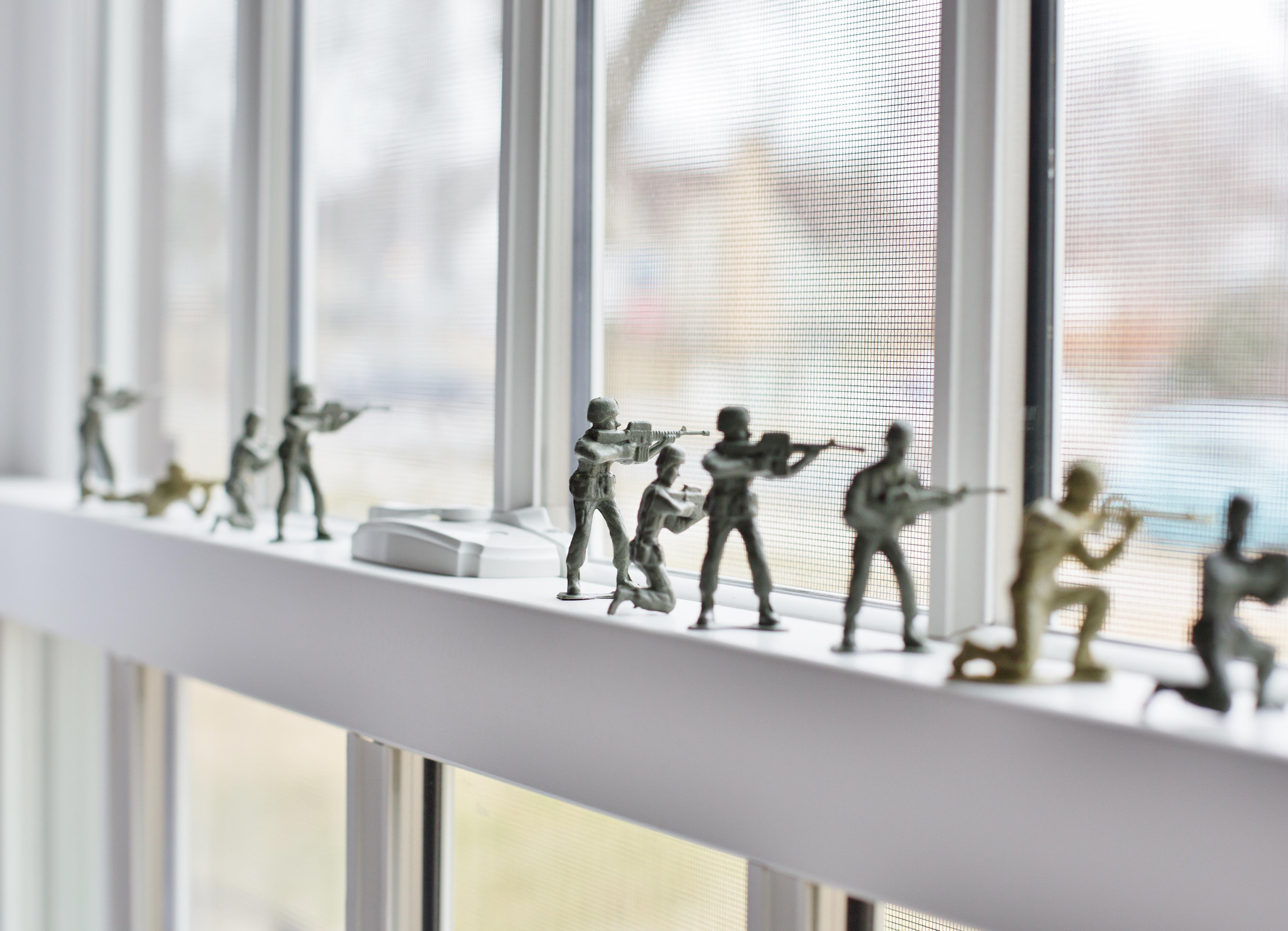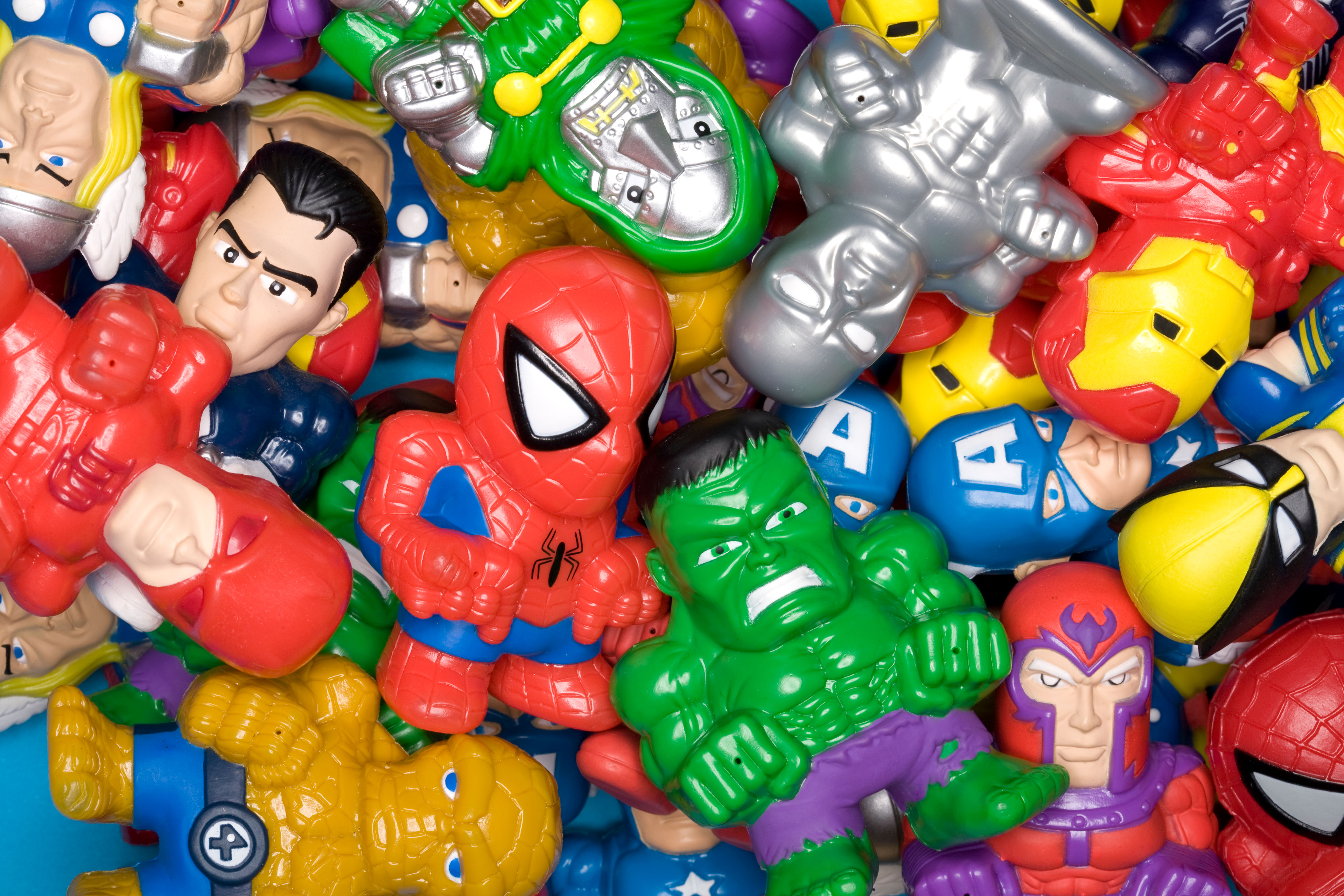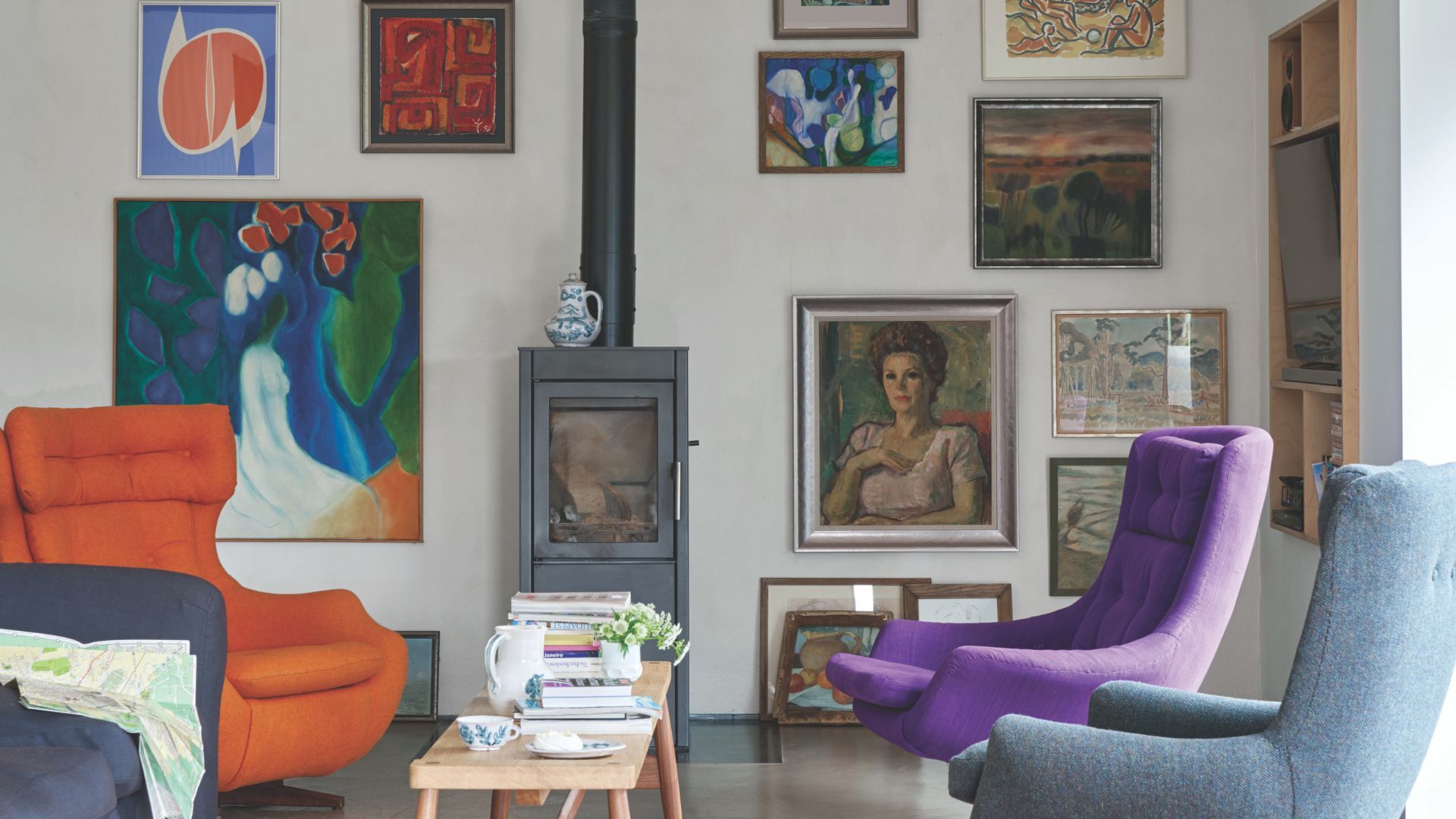10 tips for decluttering toys – that your kids can live with
Despite what they might think, decluttering toys can make for happier kids in the long run. Here’s how to make the process as easy as possible for them – and for you

The things children surround themselves with often hold a great deal of emotional significance (even if we can’t see it), so decluttering toys can be a difficult process for them to deal with. With that in mind, you’ll likely encounter a certain level of ‘reluctance’ when decluttering with little ones, but there are a number of ways to make home organizing easier on them.
When it comes to organizing toys and effective toy storage ideas, less is more. Not just for the sake of keeping your home neat and tidy, but also for your child’s play – after all, there’s nothing like clutter to cramp creativity. There’s no such thing as an ‘ideal number’, and we’re certainly not saying get rid of all, or even most. But if it’s an inspirational play space you’re after, decluttering toys is the best place to start.
10 tips for decluttering toys
Before you start, understand that decluttering toys on behalf of children under three is acceptable – you know their favorites. However, according to the experts, older children should always be included in the process.
‘While it doesn’t hurt for a grown-up to initiate their own decluttering ideas, including children is important if you don’t want them to fear the process in the future, and make any avoidable decluttering mistakes. Getting them involved will help them get used to the feeling of letting go’, says professional organizer Vicky Silverthorn of You Need a Vicky.
She also makes the point that children – just like adults – can quickly become overwhelmed when confronted with too many choices and decisions to make. ‘To prevent this from happening, consider creating a small box of items they need to look through and make decisions on themselves. This will help them to feel in control of their own belongings’.
In line with this advice from Vicky, we’ve put together a list of top tips and techniques for decluttering toys and organizing a bedroom that will make the process quick, easy, and even enjoyable for your kids – and for you, too.
1. Start with the easiest decluttering tasks
Decluttering can be a daunting task for adults, let alone for children, so it’s always a good idea to keep things simple and easy to begin with. Start by getting rid of broken toys, used sticker books, full coloring pads – anything that no longer has a use. Next, move on to duplicates; try and limit your child to just a few types of each toy.
Once you’ve done that, it’s time to tackle outgrown toys. You’re likely to meet more resistance here, as whilst they may no longer be favorites, once-loved toys likely hold emotional significance. You know your child best, but as a general rule, don’t push too hard – a ruthless approach to decluttering is likely to result in an unnecessary upset, and there are plenty of gentle methods you can use that are just as effective.
2. Declutter little and often
It’s best to declutter in short bursts with children. Their attention spans are shorter than those of an adult, so if you try to tackle too much at once, they’re likely to lose interest. Don’t push them too hard; set a measurable goal, such as one storage box in 30 minutes, to keep them feeling confident and motivated, then take a break before starting again.
3. Make it fun

Let’s face it, decluttering and tidying isn’t most children’s favorite way to spend an afternoon… or an adult’s, for that matter, so it's in everyone’s interests to make the process as enjoyable and stress-free as possible. Create a fun setting and keep energy levels high with snacks on hand and music on in the background – you’ll be amazed at what a difference it makes.
4. Hold on to decluttered toys for a few weeks

During the decluttering process, you’re likely to come across a few toys you’re not sure about, particularly when decluttering on behalf of younger children. Collate these into a box and store them somewhere out of sight. Set a limit of 2-4 months – if your child hasn’t asked for them in that time, you know they won’t be missed.
5. Instil a toy rotation system
Decluttering doesn’t have to mean getting rid of toys altogether; rotating toys on a regular basis will limit the number of toys on offer at one time, which has been proven to increase children’s focus and engagement – not to mention make for a more clutter-free environment.
Fill two or three boxes per child, each with a mix of toy types, and store them in the loft or garage. Depending on your system, you could rotate these on a weekly, monthly, or tri-monthly basis. ‘Bringing them back into circulation after time away creates a novelty factor similar to the buzz of something new – but without the pricetag,’ says professional organizer Katherine Blacker of SortMySpace Ltd .
6. Don’t hold on to toys for your own sake

It’s not just children that love toys, adults do too. Whether you have happy childhood memories of playing with your own dollhouse, train set, or cuddly toy… it’s not uncommon for a child to move on from a toy, while the parent can’t bear to see it leave their collection. Be really honest with yourself about why you’re holding onto it – if your child isn’t bothered, then you need to let it go, too. Consider passing toys like this on to friends or family, or a parent who you know will love, appreciate and enjoy it as much as you did.
7. Explain the importance of sharing
Donating toys is not just a great way of decluttering, it also offers up an opportunity to teach your children the importance of sharing and giving.
‘Sorting through old toys is a great time to start the conversation of paying it forward. Make the point that It’s not goodbye, it’s bringing joy to another, so we should feel great about what we’re doing!’, explains professional organizer Julie Onstot of SortWell Organizing Co.
Explain how these toys can bring happiness to someone else, and let your child know exactly where they’re going, whether it’s a nursery, hospital, or children’s shelter – you could even take your child to visit beforehand if it’s appropriate to do so.
8. Take pictures of toys you’re not keeping
Remember, it’s not the toy itself that holds emotional significance, it’s the memories that go with it. Taking photographs can help children make peace with letting go. When decluttering with older children, encourage them to think about, and then write down, all the good memories they associate with that item.
9. Dedicate space for favorite creations

Creations certainly don’t count as clutter, however, when space is tight, you need to be a little mindful of how – and what – you leave out on display. Whether it’s intricate drawings, playdough creations, or lego models, dedicate some space for your children’s latest artwork and store previous pieces in a keepsake box elsewhere.
‘It’s tough, but try to keep only the best or most sentimental pieces in hard copy. If you're really struggling, taking photos and printing off much smaller versions is a good space-saving hack’, recommends Lucy Searle, Editor in Chief of Homes & Gardens.
10. Establish a set of limits going forwards
As much as they may like to challenge them sometimes, kids love boundaries. Establishing a manageable set that they can adhere to keeps them involved in the decluttering process from start to finish – and helps them to keep clutter from building up again in the future.
Find limits that work for you, but keep them simple and manageable. No duplicates, for example, or a ‘one-in-one-out’ rule; for every new toy your child gets, they must donate an older one that they no longer play with.
How do I get rid of a lot of toys?
Whether you're organizing a playroom or sorting your child’s bedroom, decluttering a lot of toys at once can be overwhelming. Start by getting rid of anything that’s broken or no longer serves a purpose – this is quick and easy to do, and reduces things down, making the task ahead feel more manageable. Next, group items into categories. Try and limit to just a few types of each toy and donate any extras, as well as any items that your child has outgrown.
It’s worth bearing in mind that you’re certainly not depriving your children by reducing their toy collection, especially if they own a lot of them. In fact, experts claim that a smaller selection can actually improve creative play; too much choice can result in indecision and a lack of focus, so you’re actually doing your children a big favor, despite what they may think!
How do you get rid of toys without feeling guilty?
One thing we’re all aware of when decluttering is how to avoid ‘declutter regret’, mainly when there are children’s emotions involved. If you’re feeling the guilt, try to remember that it’s not the toys themselves that hold significance, it’s the memories they hold, and those aren’t going anywhere.
Taking photographs of items before you give them away can help remind yourself and your children of the positive impact these pre-loved items will bring to somebody else. Of course, there will be some toys you can’t bear to part with, and that’s ok – don’t feel guilty about that, either!
Sign up to the Homes & Gardens newsletter
Design expertise in your inbox – from inspiring decorating ideas and beautiful celebrity homes to practical gardening advice and shopping round-ups.
For 10 years, Tara King worked as a Content Editor in the magazine industry, before leaving to become freelance, covering interior design, wellbeing, craft and homemaking. As well as writing for Ideal Home, Style at Home, Country Homes & Interiors, Tara’s keen eye for styling combined with a passion for creating a happy – and functional – family home has led to a series of organization and cleaning features for H&G.
-
 'Nightstands have a sneaky way of turning into catch-alls' – I’m a professional organizer, and these are the only things I keep on mine
'Nightstands have a sneaky way of turning into catch-alls' – I’m a professional organizer, and these are the only things I keep on mineLess is more when it comes to creating a restful sleep space
By Di Ter Avest
-
 I promise, these 6 best white Farrow & Ball paints will end your search for the perfect shade
I promise, these 6 best white Farrow & Ball paints will end your search for the perfect shadeWhite but not boring: these are the best Farrow & Ball shades you need to know about
By Sophia Pouget de St Victor
-
 7 dorm room organizing rules for less clutter and more space
7 dorm room organizing rules for less clutter and more spaceExperts offer their top tips for creating a well-organized dorm room, no matter the size, space, or layout.
By Ashley Chalmers
-
 How to maximize storage in a small or shared dorm room, according to pro organizers
How to maximize storage in a small or shared dorm room, according to pro organizersFind out all the hidden storage zones you might never have noticed
By Ashley Chalmers